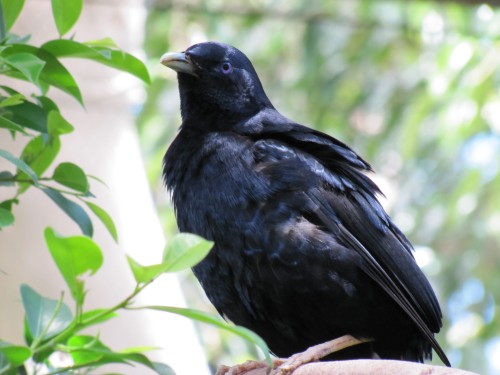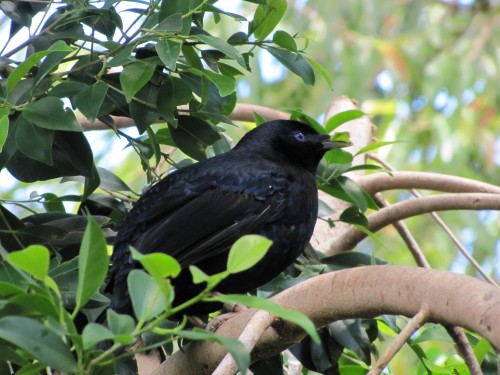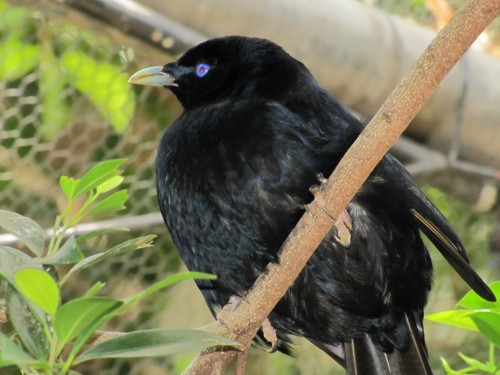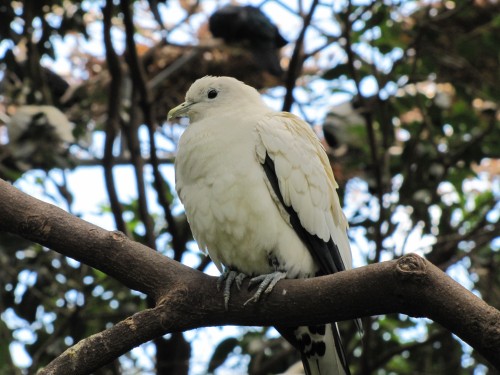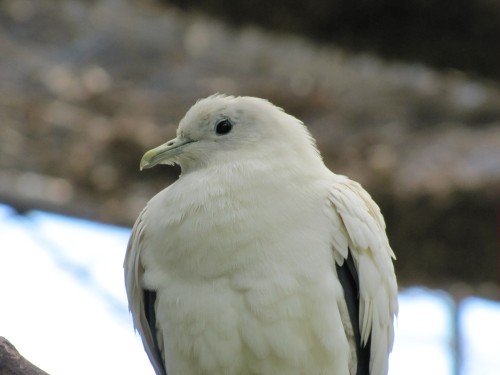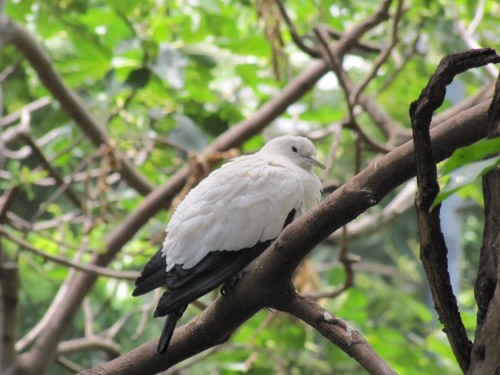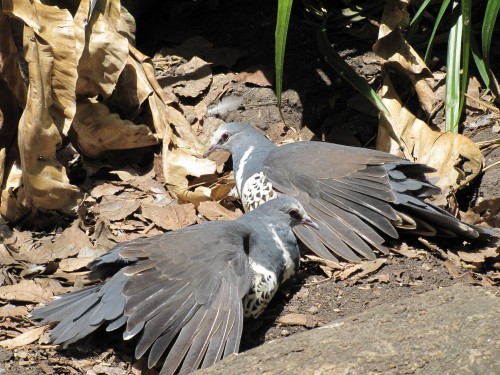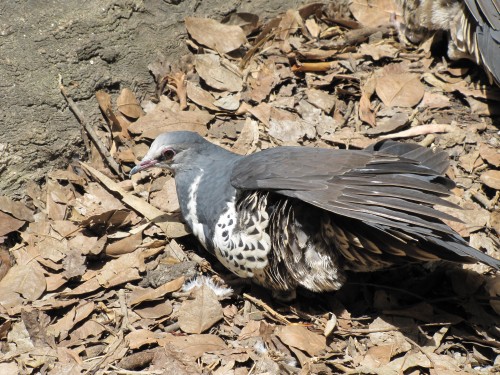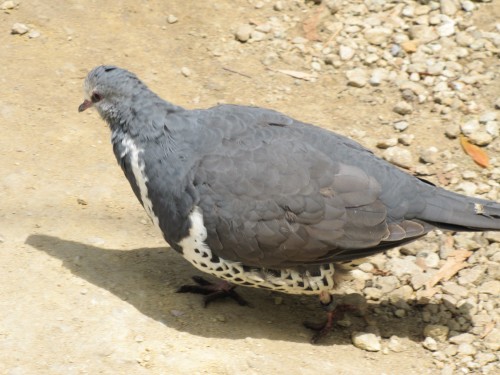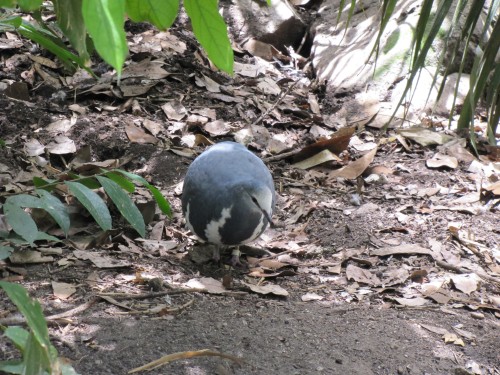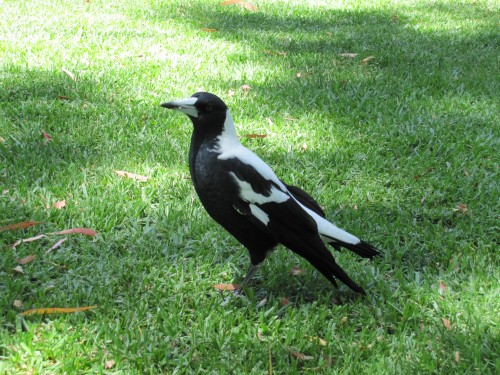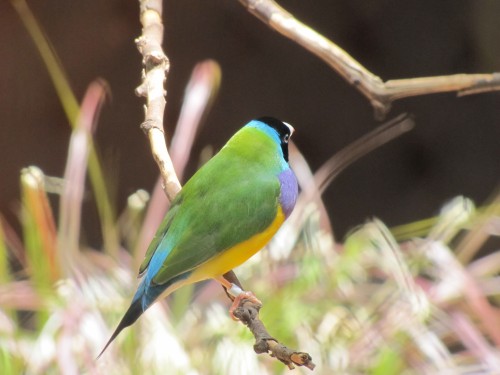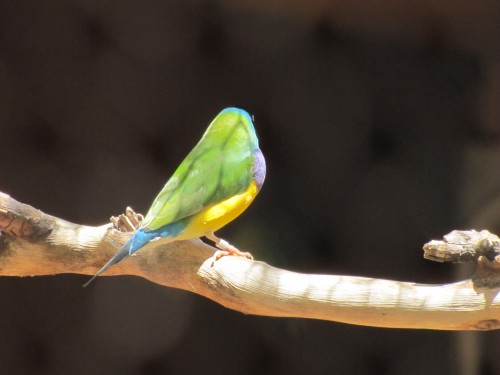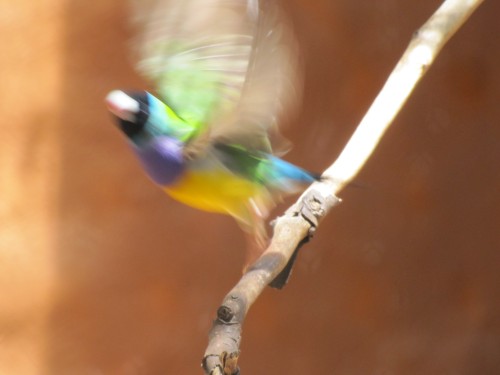Satin Bowerbird, Adelaide Zoo
These photos were taken in a walk through aviary in the Adelaide Zoo, South Australia. Visiting the zoo with its excellent collection of birds is always an attraction for me because one can get up close to many species I’ve not seen in their natural environment – or only fleetingly seen at a distance. It’s very good for honing one’s photography skills too.
I’ve only seen a Satin Bowerbird in its natural habitat on a handful of occasions, the most recent being a few weeks ago in a garden in Bright, Victoria. It frequents rainforests, woodlands, scrubs, orchards, parks and gardens. This species is found along the coastal parts of eastern Australia, from southern Queensland through New South Wales and into Victoria. There is an isolated race in northern Queensland.
The female builds a stick nest in a tree near to the bower of the male. Like other bowerbird species the male builds an elaborately decorated bower of sticks on the ground to attract the female, usually including a vast collection of blue or yellow objects.
Pied Imperial-pigeon, Adelaide Zoo
This elegantly beautiful bird is another species I have yet to see in its natural habitat. These photos of Pied Imperial-pigeons were taken earlier this year in a walk through aviary in the Adelaide Zoo, South Australia.
To see this species I would have drive for about five days. Its range is over 3000km (about 35 hours’ travelling time) away from my home in Murray Bridge, South Australia. It’s far quicker to drive for an hour so I can see it in the zoo, but this is far less interesting and rewarding than seeing it naturally.
This pigeon is found in far northern parts of Western Australia and the Northern Territory, as well as north eastern Queensland, all places I have yet to visit. Their range extends to the islands off the north coast of Australia as well as in Indonesia and Papua New Guinea. Some populations are migratory.
They are found in rainforests, eucalypt woodlands, coastal scrubs, mangroves and on islands. They are mainly fruit eaters.
You can learn more about them here and see more of my photos of this species here.
Wonga Pigeon, Adelaide Zoo
The Wonga Pigeon is found in the eastern coastal regions of Australia, from south eastern Queensland through eastern New South Wales and south eastern Victoria.
It is a bird of the rainforests, drier woodlands and eucalypt forests. It is largely a ground feeding bird.
These photos were taken in a walk through aviary in the Adelaide Zoo, South Australia. I have only ever observed this species on one occasion in its natural environment. That was in Dorrigo National Park in northern New South Wales. Considering that my sighting of this species was recorded over 30 years ago indicates I need to get out birding far more often.
A significant milestone for Trevor’s Birding
Trevor’s Birding site has reached a significant milestone this morning:
5000 COMMENTS
Over the years the comments on this site have sometimes dribbled in, at other times they come in a flood. Some posts have received hundreds and comments, and others none at all. Some have been hilarious, many have been helpful – to me and my readers – and others very thoughtful. Fortunately, very few have been annoying and on only one occasion have I had to close comments on a post due to misguided people trying to post abusive or less than polite comments.
I have made good friends via this site and have even have had invites to other birders’ homes and one has even stayed in my home. Most birders are wonderful people, and sharing a love of birds gives one common grounds to explore our interests.
Writing about birds on this site has also led to some unexpected side benefits:
- I am in demand as a public speaker about birds.
- I have received quite a number of bird books from publishers wanting me to review their books.
- I have been interviewed twice by our local newspaper.
- My bird photos have appeared in books, magazines, periodicals, newspapers, on pamphlets, on tourist guides and even on the cover of a CD.
- This site is regularly listed as one of the top 100 birding sites worldwide. (At one point a few years ago it reached #26.)
Above all, I have been delighted with the development of a sense of community amongst my readers. They correspond with each other via the comments section, helping each other and giving advice to those with questions about birds, especially injured or orphaned birds.
But wait – there’s more:
I do not intend to rest on my laurels. I have plenty more photos to share, experiences to relate and stories to tell about birds. More posts are scheduled to appear in the coming days and weeks, and as I travel around I plan to take photos of birds wherever I go – then share them here. (Why not visit Trevor’s Travels, another of my sites where I share photos of my travels here in Australia and also in Thailand, Nepal, Ethiopia, Morocco and Spain. Don’t forget to leave comments!)
You could also investigate the archives section (link above) or investigate any of the categories (links on the side bar) and read older posts I have written. Nearly 1500 articles about birds and birding, here and overseas. And I’d love more and more comments too.
Why not leave a comment or two here today?
Gouldian Finch, Adelaide Zoo
The above photo of a Gouldian Finch in an aviary in the Adelaide Zoo, South Australia is not a good one.
Sure – it shows some of the brilliant colours of this magnificent species, but the bird in question would not turn to face me. I had enough problems focussing on the birds through the black wire netting of the aviary, only to add to my angst when the bird would not pose appropriately for me. Nor would any of the other finches in this cage despite waiting a considerable time for them to settle. They were all very flighty and more concerned about flying around than posing for me.
Sigh.
Next time… I hope.
